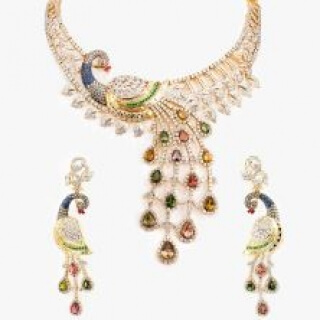A Beginner's Guide to Jewellery Design Eras
The Cuttings Blog
 When buying a vintage or antique piece of jewellery, it's important to know which era it is from to determine whether you are paying the right price. You may have heard the terms "Art Deco" or "Art Nouveau" referenced in jewellery, but need some clarification between them.
When buying a vintage or antique piece of jewellery, it's important to know which era it is from to determine whether you are paying the right price. You may have heard the terms "Art Deco" or "Art Nouveau" referenced in jewellery, but need some clarification between them.
At Cuttings we are lucky to stock a wide range of vintage and antique jewellery spanning a range of eras, and are always on hand to answer questions you may have.
Retro Jewellery (1930s-1950s)
This is the age of Hollywood, with jewellery reflecting its bright lights and dazzling style. Jewellery from this era is big, bold and very sparkly! Large cocktail rings, charm bracelets, glitzy watches and necklaces were all very popular.
Art Deco Jewellery (1920s-1930s)
With the cubism movement as a reference, Art Deco jewellery is characterised by its geometric shapes and bright colours. It was also influenced by Japanese, Egyptian and African cultures, resulting in long necklaces, ornate earrings and chokers.
Edwardian Jewellery (1901-1910)
While King Edward VII was on the throne, jewellery design was elaborate, lavish and ornate, with lots of attention to detail. Diamonds, pearls and brilliant gemstones were all prominent during this era.
Art Nouveau Jewellery (1895-1915)
Incredible effort was put into art nouveau pieces, with jewellery designers taking reference from the furniture and architecture of the era. Jewellery featured flowers, insects and beautiful women produced in enamel along with moonstones, opals and pearls.
Victorian Jewellery (1837-1901)
The Victorian era covers a wide time span, so there are naturally a few sub eras to categorise jewellery:
1. Early Victorian, Romanticism (1837-1860)
Similar to the Georgian era, jewellery from the Romantic era was naturalistic, characterised by gold filigree and floral designs. Bracelets with jewelled buckles were also very popular, along with lockets, brooches and coloured gemstones.
2. Mid Victorian, Confidence & Revivalism (1860-1880)
The unfortunate death of Queen Victoria’s husband in this era brought about 'mourning jewellery'; Sombre design pieces using dark stones like jet, amethyst, onyx and deep red garnets were prominent. This period also marked an improvement in gemstone polishing, resulting in brightly coloured stones being made to fit into new settings.
3. Late Victorian, Aesthetic (1880-1901)
The late Victorian period saw a shift from hand-crafting to mass production, with an emphasis on diamonds and gemstones to meet the growing demand for fine jewellery. Hat pins and sentimental brooches were also popular and widely produced.
4. Georgian Jewellery (1714-1837)
Georgian jewellery was all handmade, presenting intricate designs with natural themes. Jewellery from this era is both rare and of high quality, so understandably it is highly sought after and will achieve great prices.
For more information about jewellery eras or to see some examples, come and visit us in one of our shops, or just give us a call!




